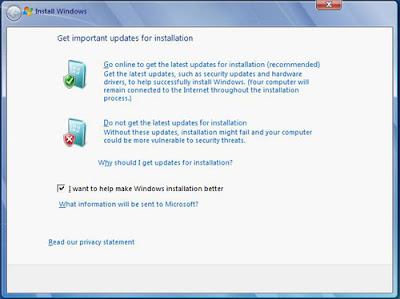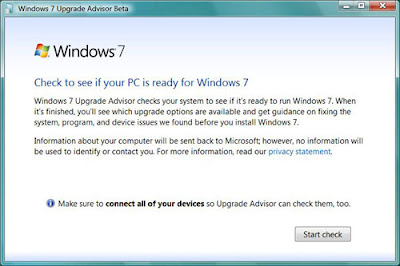

CHECK PRICES$830 - $1097
eBay $829.95
Adorama $849.00
Amazon $849.95
The 12.3-megapixel Nikon D5000 is a terrific buy, offering the image quality of a more expensive D-SLR for a price of just $729.99 (direct, body only). Not only does this camera shoot beautiful images under any lighting conditions, but it can also capture 720p24 high-definition video, and its Live View LCD is mounted on a rotating, swiveling arm. Our minor complaints include the inability to autofocus in video mode, and a 2.7-inch LCD with a lower resolution than our newest Editors' Choice budget D-SLR, the $900 (with lens) Canon EOS Rebel T1i. Still, the Nikon D5000 is a top-notch shooter that should please all but the most finicky of photographers.
Although it's a bit smaller than a prosumer D-SLR, measuring 4.1 by 5 by 3.1 inches (HWD), the D5000 looks and feels professional, thanks to an expensive-looking spackled black body. It uses the same image sensor as the $1,000 (body only) Nikon D90, and from the back, the two look nearly identical. The feel of the camera's controls is comfortable, and the placement ergonomic: Its buttons are large, well-separated, and easy to press, since most of them are mounted at a slight angle pointing away from the LCD. Without a lens, the body weighs 1.3 pounds; with our 18-to-55mm test lens, it weighs 1.9 pounds.
Like the Canon T1i, the Nikon D5000 is also sold bundled with an 18-to-55mm VR lens for $899. If you can afford it, I recommend buying the body separately and spending a little more on a lens with a greater optical zoom; you can do better than this lens's 4.8X. The D5000 (like all Nikon D-SLRs) uses the "Nikon F bayonet" lens mount, so it's compatible with a wide range of Nikon lenses.
The 2.7-inch Live View LCD succeeds at being versatile, but otherwise, it's a bit of a letdown. First the good: Since it's mounted on an arm that folds down 90 degrees and rotates both left and right, you can easily see what you're shooting if you're holding the camera above your head. Also, you can flip the LCD around so it faces the camera and won't get scratched up when it's not in use. The problem with the screen is its resolution: Although the displays on the D90, the T1i, and the Canon EOS 50D are each packed with 920,000 pixels, the D5000's screen uses only 230,000. While photo previews, menu text, and icons don't look terrible, they're definitely sharper on the aforementioned cameras.
When it comes to speed, the D5000 outpaces Canon's T1i in some areas but lags behind in others. Both cameras are able to focus quickly. The D5000 powered up and captured its first shot in an average of 1.37 seconds; while the T1i averaged a quicker 0.68 second. The T1i can capture 3.4 frames per second at its maximum resolution (15.1 megapixels). The D5000 is a bit faster at 4 fps, although its resolution (12.3MP) is lower. The pricier Nikon D90 and the Canon 50D ($1,300, body only) are even speedier, shooting at 4.5 fps and 6.3 fps, respectively.
Image quality on the Nikon D5000 is impressive. In our photography lab, I use the Imatest suite to gauge image quality objectively, and test results indicated that the D5000 was comparable to both the Nikon D90 (which, again, uses the same sensor) and the T1i. The T1i offers particularly sharp images at lower ISOs (100, 200, and 400), respectively, capturing 2,102, 2,079, and 2,035 lines per picture height in well-lit conditions. The D5000 was close but not as sharp, capturing 1,778 lines at ISO 200 and 1,743 at ISO 400 (ISO 100 isn't available on the D5000). In lower-light conditions, at higher ISOs (1600 and 3200), images were a bit sharper than with the T1i: The 5000D captured an average of 1,361 and 1,352 lines, while the T1i averaged 1,248 and 1,165.
Shooting out of my apartment window on a rainy night in New York City, I got some beautiful images with the D5000. There wasn't much light, but that didn't stop the D5000 from capturing noiseless photos of puddles on the pavement that reflected the white light of the street lamps. HD Video that I recorded also turned out well: In playback mode you could clearly hear the pouring rain and blowing wind.
As mentioned above, the D5000 can produce fantastic-looking HD video—1,280 by 720 pixels (progressive) at 24 frames per second, aka 720p24—but operating the camera in video mode can be tricky. It can't lock onto a subject and keep it in focus, so if you want to refocus you have to switch the lens to manual focus mode and turn the focus ring by hand. To be fair, I haven't seen a D-SLR yet that has fully mastered video recording without quirks.
The T1i has an option for automatic refocus, but that takes a few seconds to kick in, and the recording captures the mechanical noise made by the lens. Also, neither camera offers a microphone input. Still, with some patience and practice, you can achieve high-quality video with the D5000.
A minor quibble: The USB port, used to connect the camera to a PC, is proprietary (though the cable is included), whereas the T1i uses a more easily replaced standard mini USB connector/cable. The USB port is located underneath a rubberized cover on the left side of the camera; next to it is an input for a GPS accessory (sold separately) for geotagging your photos. On the other side of the USB port is a mini HDMI out for a one-cable, digital A/V connection to let you view your photos on an HDTV.
Both the Nikon D5000 and the Canon EOS Rebel T1i are very solid cameras offering features galore, beautiful images, and HD video for less than $1,000. If you already own Nikon lenses, the D5000 is a no-brainer. But for those who don't have a brand allegiance or are just entering the D-SLR realm, I have to recommend the Canon EOS Rebel T1i, our Editors' Choice, over the D5000 for its higher 15.1-megapixel resolution, sharper LCD, and ability to autofocus when shooting video.
Nikon USA
Price as Tested: $729.95
List Type: D-SLR
Megapixels: 12.3 MP
Maximum Resolution: 4288 x 2848 pixels
Included Memory: Media Card
Media Format: Secure Digital, Secure Digital High Capacity V
ideo Record and Playback: Yes
Wireless Connectivity: No
Bluetooth: No
-pcmag





















